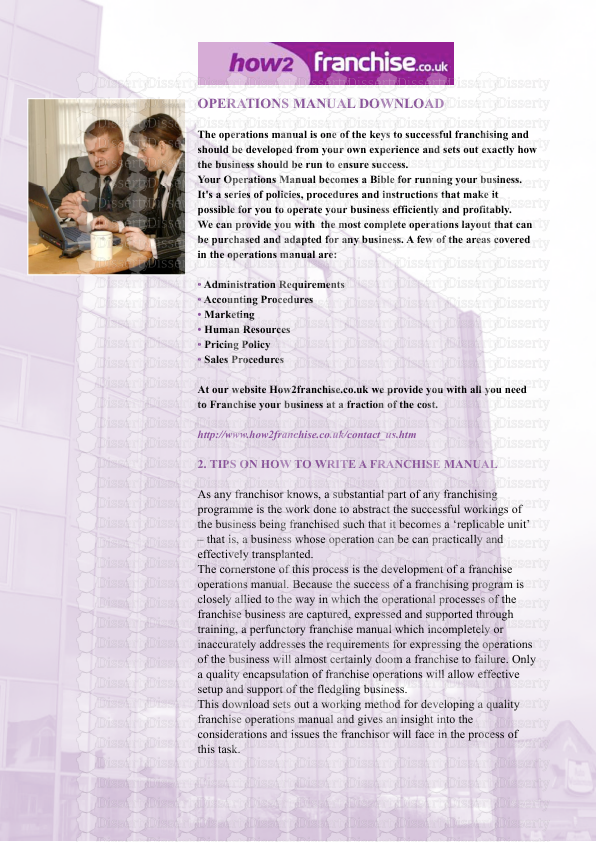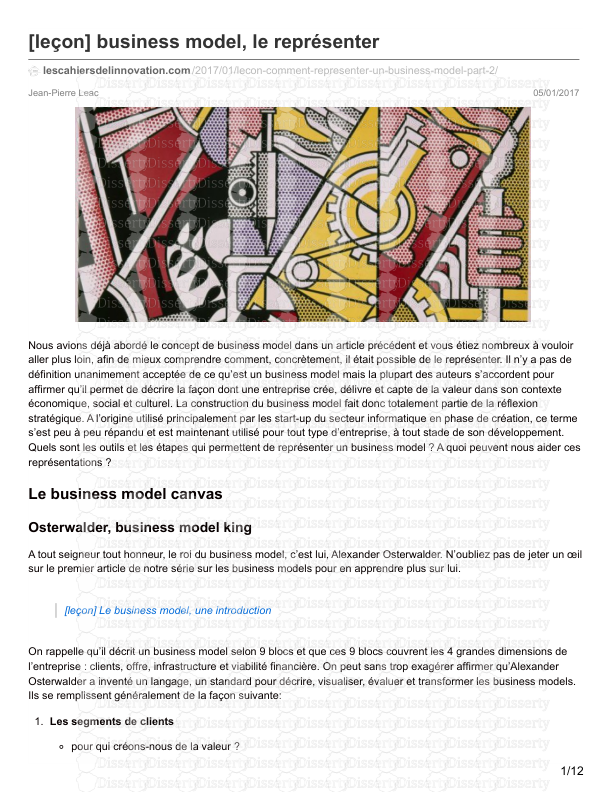© 2017 University of South Africa All rights reserved Printed and published by
© 2017 University of South Africa All rights reserved Printed and published by the University of South Africa Muckleneuk, Pretoria BSM1501/1/2018–2020 70513201 MNB_style 1 BSM1501/1 (iii) CONTENTS Page INTRODUCTION ...........................................................................................................................iv LEARNING UNIT 1 ...........................................................................................................................................1 LEARNING UNIT 2 .........................................................................................................................................17 LEARNING UNIT 3 .........................................................................................................................................38 LEARNING UNIT 4 .........................................................................................................................................51 LEARNING UNIT 5 .........................................................................................................................................76 LEARNING UNIT 6 ...................................................................................................................................... 100 APPENDIX A ...............................................................................................................................122 (iv) INTRODUCTION Welcome 2It is a great pleasure to welcome you to this module. We hope that you will enjoy this course. This study guide is merely a summary of the contents in your prescribed textbook. PURPOSE OF THE MODULE 3The purpose of the module Entrepreneurship and how to establish your own business is for you to acquire foundational concepts in business management. This module will de- velop your understanding of entrepreneurship and it will teach you how to become an entrepreneur and introduce you to the route that you have to follow to start your own business. It provides a foundation for all later modules in this subject. LINK TO OTHER MODULES 4This module does not stand alone. It is an integral part of Business Management I. The purpose and the learning outcomes of this module are therefore aimed at developing your expertise and abilities in the fi eld of entrepreneurship. MODULE OUTCOMES Module outcomes 5After completing this module, you should have the competence to identify and start a small business with the necessary assistance and support, and to develop business plans that comply with appropriate laws and that refl ect an ethical approach to management. 6The intended outcomes can be distinguished as follows: 7SPECIFIC OUTCOMES 8ASSESSMENT CRITERIA 91. Compile a business plan with assistance 101.1 Apply market research techniques and the SWOT analysis to identify and evaluate opportunities, sketch cus- tomer profi les and identify competi- tive advantages. 111.2 Apply fi nancial and marketing knowl- edge and planning and information technology skills to generate a busi- ness plan. (v) BSM1501/1 122. Implement a business plan with assistance 132.1 Apply knowledge of the business world and communication and networking skills in obtaining a support base. 142.2 Use knowledge of legal requirements to register an enterprise and en- sure compliance. 152.3 Apply knowledge of business practice to obtain the necessary resources. 162.4 Identify entrepreneurial skills to start an enterprise according to the business plan. Framework of the module 18The following six chapters of the prescribed textbook provide the framework for this module: CONTENTS CHAPTER 1 – ENTREPRENEURSHIP AND SMALL, MEDIUM AND MICRO ENTERPRISES IN PERSPECTIVE CHAPTER 2 – BASIC BUSINESS CONCEPTS AND THE BUSINESS ENVIRONMENT CHAPTER 3 – THE IDENTIFICATION AND DEVELOPMENT OF BUSINESS IDEAS CHAPTER 4 – THE VIABILITY OF A BUSINESS IDEA CHAPTER 5 – THE BUSINESS PLAN CHAPTER 6 – SETTING UP A BUSINESS 19 (vi) A mind map for the prescribed textbook 20Entrepreneurship and how to establish your own business 21 Composition of the study/learning package for the module 22The study package for this module consists of this study guide and tutorial letter 101. You must purchase the prescribed book as soon as possible. The prescribed book is vital because you will not be able to complete this module successfully without it. COMPLETING ACTIVITIES, SELF-ASSESSMENT QUESTIONS AND ASSIGNMENTS 23We consider the completion of the activities and self-assessment questions in the tutorial letters and the assignments as crucial to the successful understanding of this module. Activities 24You will come across various types of activities in this study guide: (vii) BSM1501/1 • refl ecting on work covered • completing self-assessment questions • doing self-assessment by means of the suggested solutions to the self-assessment questions 25We consider your completion of the activities in the study guide and the assignments as crucial to your successful completion of this module. The activities in the study guide will guide you on how to manage the content of the study material. Self-assessment questions 26At the end of each learning unit you will fi nd self-assessment questions based on the work done in the chapter. We advise you to work through these questions diligently, since they provide extremely useful opportunities to prepare yourself for possible examination questions. Self-assessment plays a very important role in mastering learning outcomes and you should therefore complete the self-assessment activities in the study guide. You will fi nd most of the answers to these questions in the study material covered in the study guide and the prescribed textbook. Assignments 27By completing the assignments that appear in Tutorial Letter 101, you will get an idea of the types of questions you can expect in the examination and obtain fi rst-hand feedback from your lecturer. The assignments as well as the examination comprise only multiple- choice questions. For every question there are four options, numbered from 1 to 4, of which you must select only one. For example: 28The internal business environment consists of the … (1) micro-environment. (2) market environment. (3) macro-environment. (4) economic environment. 29You cannot select more than one option. In other words, your answer will be option 1 or 2 or 3 or 4. 30Sometimes the question asks you to select the wrong statement. You should be extra careful when answering such questions and not get confused by marking a statement that is correct (because you will not earn a mark). Please look at the assignments in Tuto- rial Letter 101. You will fi nd the occasional question asking you to indicate which of the options is wrong. 31In some questions, however, there will be several statements that could be correct. In such cases the statements will always be indicated by letters (a, b, c and d) and the answer will still be option 1, 2, 3 or 4, but these answers may refer to more than one statement. For example: (viii) 32The market environment consists of the … a. mission and objectives of the enterprise. b. consumers. c. factors of production. d. competitors. 33Choose the correct option: (1) a, b (2) b, c (3) c, d (4) b, d 34This question asks you to indicate which of the statements are correct. If you therefore think that statements b and d are correct, you will mark only option 4 as the correct answer. 35In all the above examples the stem of the question asks you to identify the correct statement(s). Sometimes the alternatives are a continuation of the stem. For example: 36The needs and preferences of consumers refer to the … environment. (1) economic (2) physical (3) social (4) technological 37In an example such as the above you have to read the stem plus option 1, then you have to read the stem again plus option 2, the stem plus option 3, and so on. Answering a multiple-choice question 38Make a photocopy or record your answers on a separate page 39You will fi nd the multiple-choice questions in the assignment extremely useful when you prepare for the examination. However, if you mark your answers (or the correct answers) on the actual page in Tutorial Letter 101, you will not be able to use these questions for revision. We strongly recommend that you either make a photocopy of the assignments and use that for revision, or else write down your answers on a separate sheet of paper to avoid making any marks on Tutorial Letter 101 itself. You will then be able to work through these questions again in preparation for the examination, without seeing the marks that indicate the correct answers. 40Decide on each option independently 41When answering a multiple-choice question, much time is often wasted (especially in the examination) by reading all four options, before deciding which one is correct. The secret is to read and decide on each option separately. For example, look at question 1 above. The stem asks you to identify which statement is correct. Take a ruler and cover (ix) BSM1501/1 the other three statements so that you see only statement 1. Read it and then, without reading any other statement, decide whether the statement is correct, wrong or that you don’t know. Put a tick next to it if you think it is correct; put a cross next to it if you think it is wrong; and put a “?” if you are not sure. Then move the ruler down so that you can read statement 2. Again decide and mark the category in which it falls. 42When you have done that with every one of the four statements, you may fi nd that you have marked one statement correct and three statements wrong. The former is then your answer. If you fi nd that you have marked two correct, then compare the two statements and choose the one that seems to be the most correct, or the most comprehensive. 43Write down your reasoning 44When you have selected your answer to a particular question, it is essential that you write down your reasons for doing so. For example, if you choose option 4 as the correct answer to question 2 above, implying that statements b and d are correct, you should write on uploads/Industriel/ study-guide 40 .pdf
Documents similaires










-
41
-
0
-
0
Licence et utilisation
Gratuit pour un usage personnel Attribution requise- Détails
- Publié le Mar 01, 2022
- Catégorie Industry / Industr...
- Langue French
- Taille du fichier 4.4090MB


